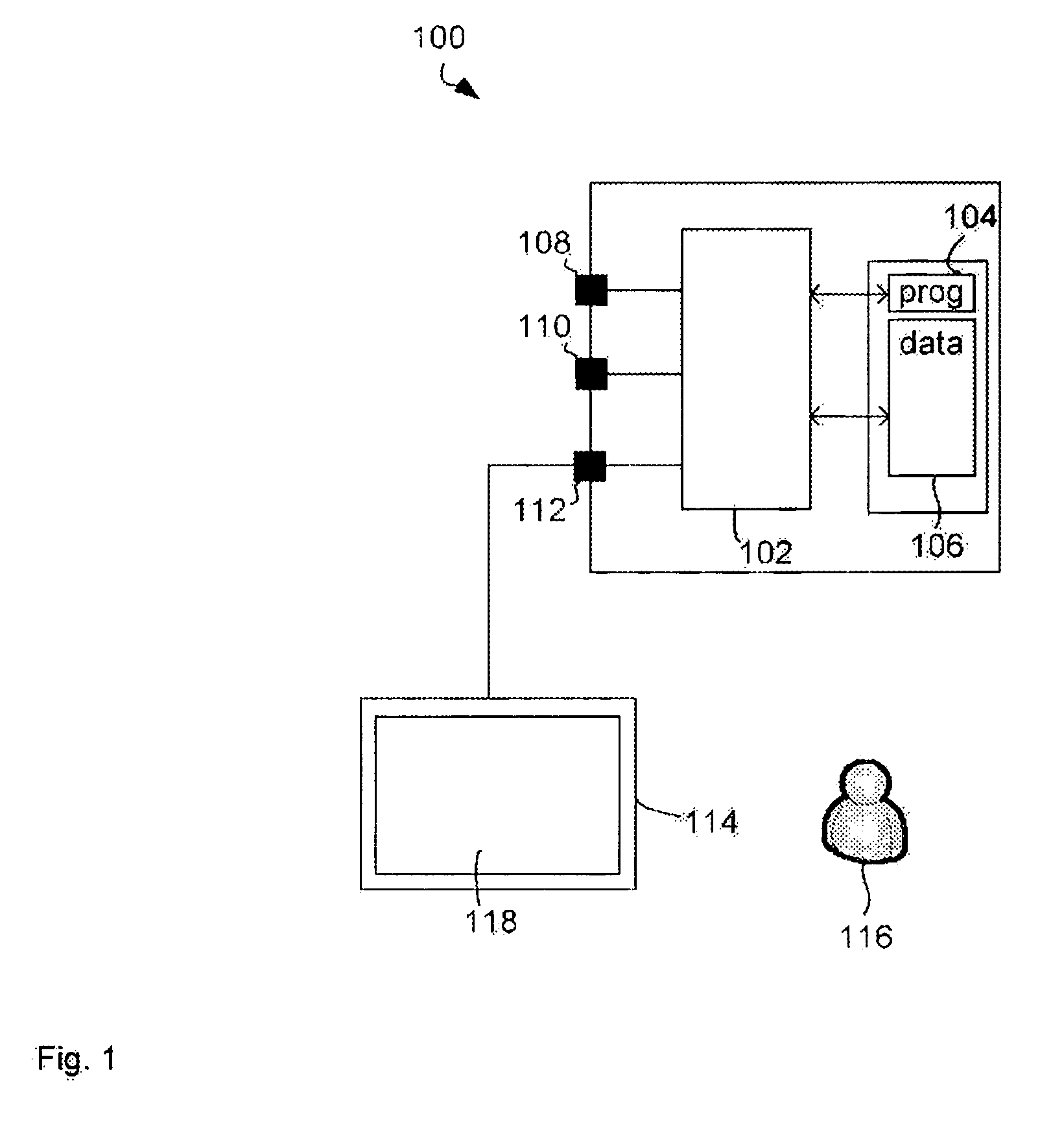Evacuation plan design
a technology of evacuation plan and evacuation plan, applied in the direction of instruments, surveying and navigation, signalling system details, etc., can solve the problems of enumerating each possible path, and enumerating the typical change of the road network
- Summary
- Abstract
- Description
- Claims
- Application Information
AI Technical Summary
Benefits of technology
Problems solved by technology
Method used
Image
Examples
Embodiment Construction
[0058]FIG. 1 illustrates a computer system 100 for planning movement of multiple groups over a transport network. The computer system 100 includes a processor 102 connected to a program memory 104, a data memory 106, first data port 108 and second data port 110. The first data port 108 and the second data port 110 may be the same data port. The processor is also connected to a user port 112 that interfaces the processor 102 with a display 114 operated by a central decision maker 116. In one example, the program memory 104 is a non-transitory computer readable medium, such as a hard drive, a solid-state disk or CD-ROM.
[0059]Software, that is an executable program comprising computer executable instructions, stored on program memory 104 causes the processor 102 to perform the method in FIG. 2, that is, the processor determines critical groups, adds one or more paths for each critical group to an initial set of paths, and determines for each group a departure schedule and a path to the...
PUM
 Login to View More
Login to View More Abstract
Description
Claims
Application Information
 Login to View More
Login to View More - R&D
- Intellectual Property
- Life Sciences
- Materials
- Tech Scout
- Unparalleled Data Quality
- Higher Quality Content
- 60% Fewer Hallucinations
Browse by: Latest US Patents, China's latest patents, Technical Efficacy Thesaurus, Application Domain, Technology Topic, Popular Technical Reports.
© 2025 PatSnap. All rights reserved.Legal|Privacy policy|Modern Slavery Act Transparency Statement|Sitemap|About US| Contact US: help@patsnap.com



